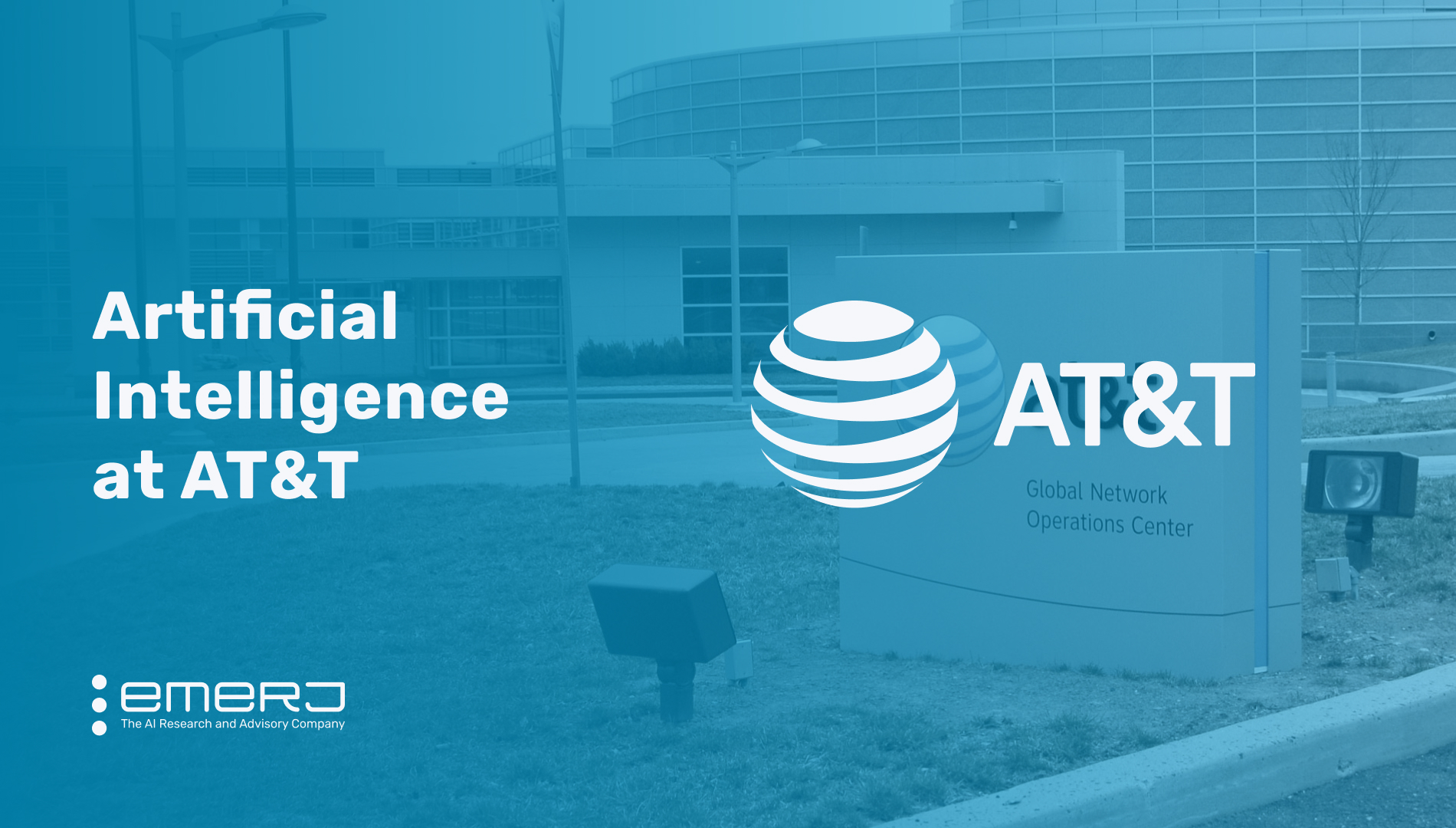
AT&T traces its history to 1875 when Bell Telephone was founded soon after Alexander Graham Bell patented his invention of the telephone. Today, AT&T is the world’s largest telecom and the largest mobile telephone service provider in the US.
As of 2021, AT&T trades on the NYSE with a market cap that exceeds $190 billion. For the fiscal year ended December 31, 2020, AT&T reported operating revenues of $171.8 billion, according to its Fiscal Year 2020 Annual Report.
AT&T claims to have embraced artificial intelligence and machine learning early on in its history in the 1950s when its Bell Labs division developed a mechanical mouse that learned from its experiences and used its memory to navigate a maze.
AT&T also participates in the open-source development of AI apps through the Acumos AI Project. The goal of the project is to lower barriers to entry and make artificial intelligence (AI) available to everyone, says AT&T.
In this article, we’ll look at how AT&T has explored AI applications for its business and industry through two unique use-cases:
- Protecting Assets against Climate Change — AT&T uses artificial intelligence and machine learning to model the impact of future climate change and inform their operational maintenance and uptime strategies.
- Fighting Phone Scams — AT&T uses machine learning algorithms to find call patterns that can indicate spoofed caller IDs and robocallers.
We will begin by examining how AT&T has turned to data and artificial intelligence technology to model the impacts that climate change may bring to four states in the US Southeast by mid-century.
Protecting Assets against Climate Change
Climate change is making hurricanes stronger, according to a study published in the Proceedings of the National Academy of Sciences. The analysis considered satellite images from the last forty years in forming its conclusion that the chance of Category 3+ storms has gone up, by 8% each decade since the 1980s.
With real estate, fiber and copper lines, cell sites, and undersea fiber located throughout at-risk zones, AT&T has a vested interest in watching and predicting the effects of climate change on its physical assets and network and anticipating how best to prepare for meteorological changes in coming years.
At particular risk is the US Southeast. According to US federal government data published in the US Climate Resilience Toolkit, property and ecosystems along the southeastern coast of the US are at risk for increased hurricane severity and storm surge flooding from rising sea levels. This puts coastal infrastructure, including AT&T’s billion-dollar investments, at risk.
To address these risks to its assets and business model, AT&T engaged the US Department of Energy’s Argonne National Laboratory to jointly develop the AT&T Climate Change Analysis Tool (CCAT).
AT&T focused its research on four states in the US Southeast: North Carolina, South Carolina, Georgia, and Florida. They prioritized the collection of data across four types of weather events:
- Inland flooding caused by increased rain
- Coastal flooding caused by rising sea levels and hurricane storm surge
- Hurricane-related high-intensity winds
- High-intensity winds not caused by hurricanes
In constructing the solution that became the CCAT, AT&T input millions of weather-related data points from Argonne National Laboratory’s databases into the AI and ML algorithms of the Climate Change Analysis Tool.
AT&T then added the map with the locations of its physical assets, including company offices and stores, cell tower sites, subterranean and above-ground wires, and other infrastructure into the CCAT.
This video, from Argonne National Laboratory, shows how environmental modeling can predict how flooding will impact specific areas, even at neighborhood scale:
Argonne modeled the impacts to AT&T’s physical assets and determined the following potential future impacts for AT&T’s infrastructure in the Carolinas, Georgia, and Florida:
- By 2050, surface water accumulations will grow by 5% in southeastern coastal and inland areas and extreme weather events will increase in frequency.
- Coastal flooding – Along the coasts of these four US southeastern states, both nuisance-level flooding as well as severe flooding will increase in frequency.
- Hurricane and non-hurricane wind speeds – The models found that “fifty-year event wind speeds of 90 mph are possible for a large part of the south Florida coastal region by mid-century.”
With the long-term weather-related predictions delivered by the Climate Change Analysis tool, AT&T claims it can make better, more informed decisions when directing and structuring its long-term, billion-dollar infrastructure investments.
While AT&T does not share specific details about how the CCAT may have already resulted in changes to repair and maintenance costs or informed its short-term network and equipment uptime strategies, it does disclose that the company “has spent about $1 billion recovering from climate-related severe weather events since 2016.” By implementing and expanding the CCAT, AT&T claims, the company “can better ensure the resilience of its infrastructure.”
In this video, AT&T explains how it will expand the reach of the CCAT to include all US states and other climate events such as wildfires and droughts.
Fighting Phone Scams
One of every three Americans reports having fallen victim to phone scams, according to 2021 Truecaller research conducted in a partnership with The Harris Poll. Through March 2021, the study found, phone scams bilked victims out of nearly $30 billion during the preceding twelve months, which represents about $500 per victim.
Sixty percent of these scams were orchestrated by robocallers, which are often made even more effective through Caller ID Spoofing. The FCC has stepped in and asked carriers to work together to solve the problem.
The FCC’s STIR/SHAKEN (Secure Telephone Identity Revisited (STIR) and Signature-based Handling of Asserted Information Using toKEN) framework required providers to implement new standards in the IP portions of their networks by June 30, 2021.
For calls traveling through interconnected phone networks, STIR/SHAKEN requires:
- the originating carrier to validate the call’s caller ID, and
- the receiving carrier to validate that sign-off.
By attacking Caller ID Spoofing, the FCC reasons, we can limit the abilities of scammers to spoof legitimate-looking numbers and gain trust from unsuspecting would-be scam victims.
AT&T claims that it has met the FCC’s STIR/SHAKEN deadline, as reported by The Verge in a June article.
“Our global fraud team uses artificial intelligence to examine billions of calls each day for patterns that indicate robocallers,” Linda Vandeloop, AT&T’s AVP-Federal Regulatory, wrote in May for the company’s public policy blog.
In this video, David Gibbon, a Lead Inventive Scientist at AT&T Labs, explains how “the company takes state-of-the-art machine learning algorithms, brings them together, and allows new developers to get up to speed quickly and create machine learning solutions.”
By using development tools and machine learning algorithms like these, AT&T looks for calling patterns in its network data that indicate likely robocallers, such as “many short-duration calls from a single source to numbers on the National Do Not Call list.” Suspected robocallers are added to a list that’s then reviewed by humans to make sure legitimate automated calls–like those from school districts–are not wrongly blocked, AT&T claims.
AT&T states that its AI-powered Network Analytics Solution blocks fraudulent calls, labels suspicious calls, and forms part of its Call Protect service. “We are authenticating and verifying hundreds of millions of calls per day,” AT&T writes in a June 2021 press release, “including calls across our own wireless network and calls exchanged with the two other leading US wireless providers.”
On its public policy blog, AT&T claims that it blocked or labeled six billion robocalls in 2020 and that it has blocked sixteen billion since 2016. By mid-2021, that number had grown to one billion calls per month. The company also claims that data from its efforts were used in “at least seven federal enforcement actions” against scammers in 2020 and that the company played a role in the FCC’s record $225 million fine imposed on Texas-based health insurance telemarketers for their spoofed robocall campaigns.







